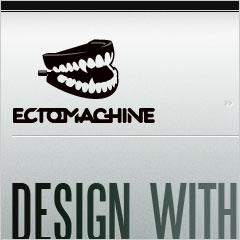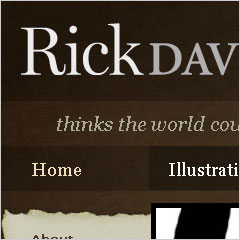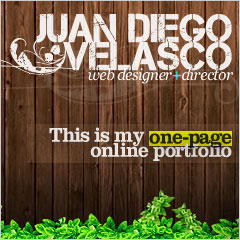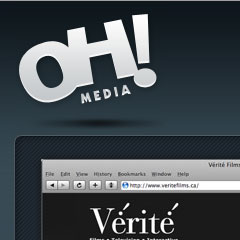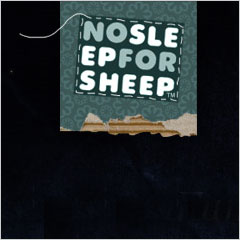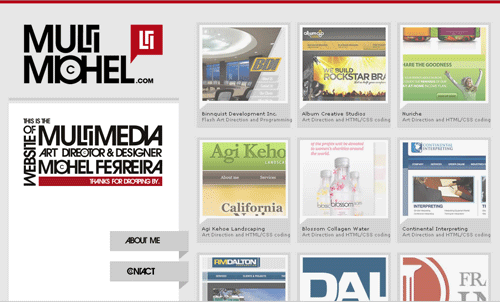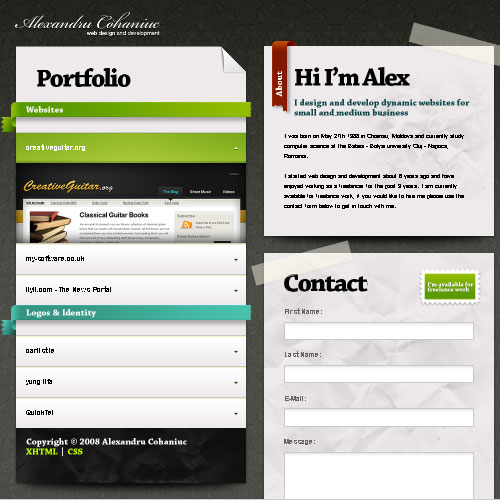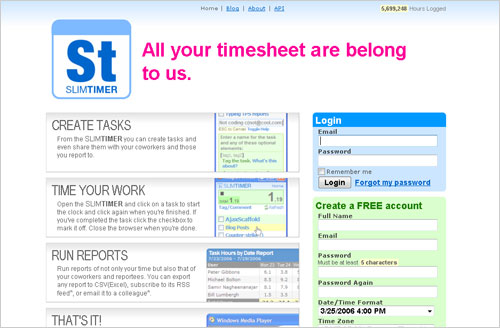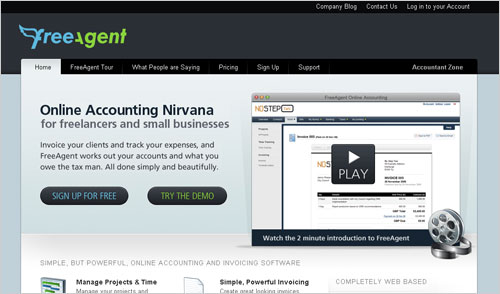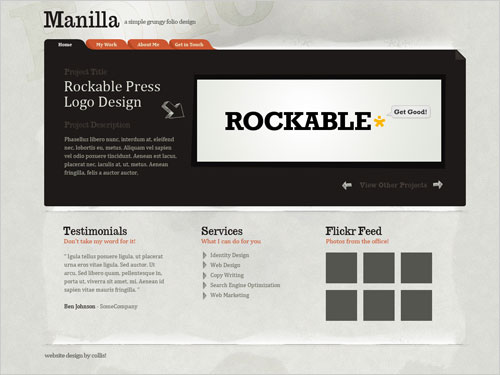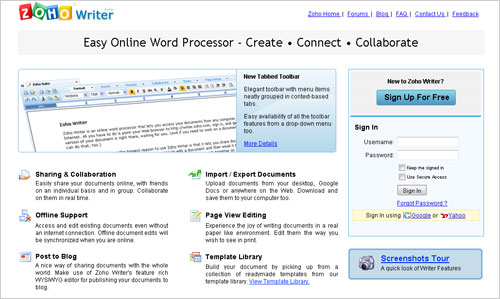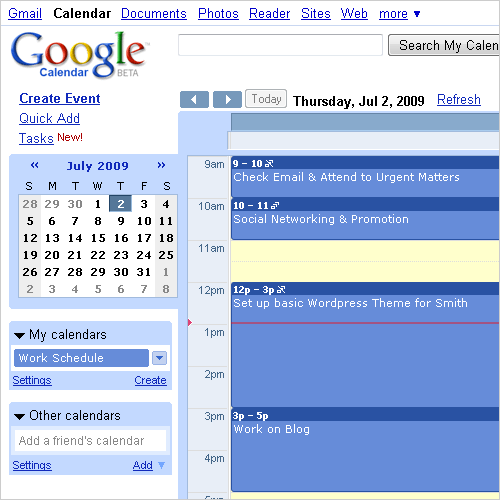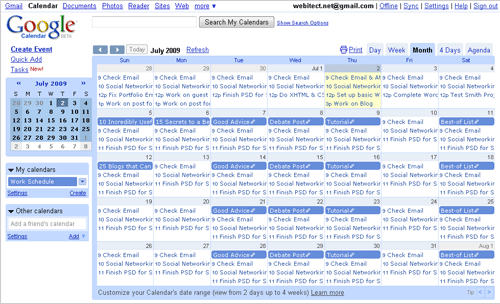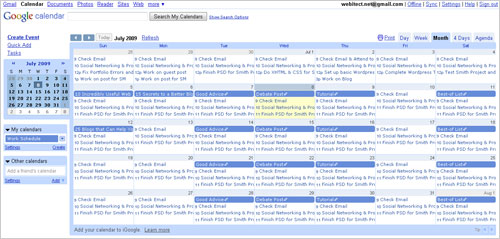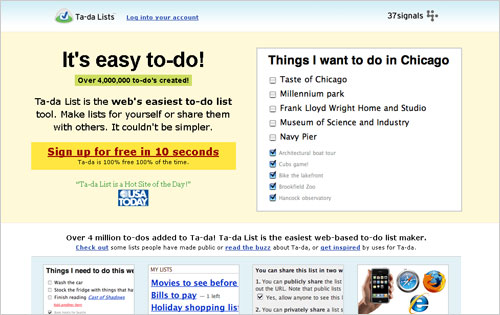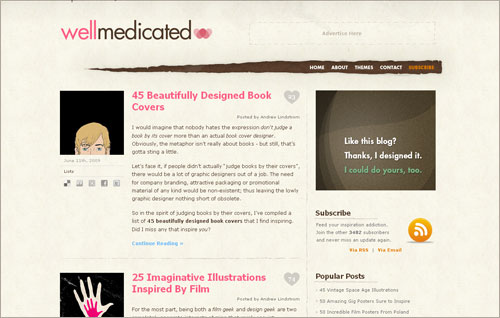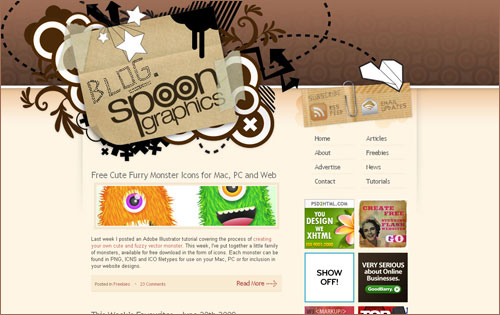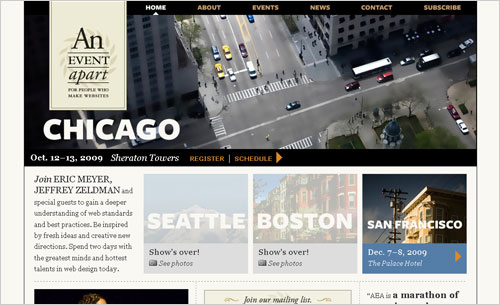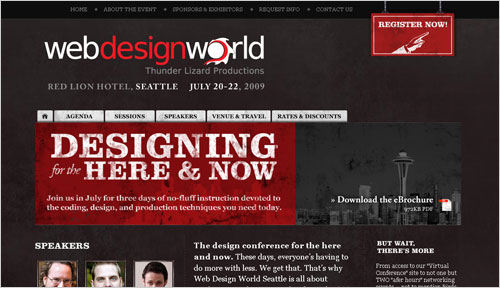The Roadmap To Becoming A Professional Freelance Web Designer
Realizing many Smashing readers probably already have a head-start into the world of professional and freelance web design, this post is meant to act as not only a step-by-step guide, but also as a checklist for those who have already started their career.
Hopefully this guide can cover all aspects of becoming a professional and freelance web designer, from business aspect and working with clients, to creating an effective portfolio and advertising one’s work.
Also consider our previous articles:
- 15 Habits Of Professional Freelancers
- Effective Strategy To Estimate Time For Your Design Projects
- How To Be A Samurai Designer
- 8 Strategies For Successful Relations With Clients
1. Do the Necessary Research
The absolute first step into any freelancing career is to do the needed research ahead of time. Freelancing is a huge life and career change, and one needs to look into exactly how it will change life before diving in.
Research the Costs
Making money on one’s own terms sounds incredibily appealing, until the realization comes that it’s a lot less money than working at a company (at first, at least). Below is just a short list of expenses to consider. Make sure they are covered when venturing into a freelancing lifestyle.
- Domain name and hosting services
- Stationery, Business Cards, and other marketing material
- Needed software
- A desk space and supplies
- Subscriptions to stock photo sites and other forms of resources
On top of that, consider basic living expenses and additional emergency or living money. At this point, a formal budget is not needed, but it’s a very smart idea to go over the basic numbers of starting a freelancing business, and maintaining it. Most of the time, designers must save up before starting a freelancing career.

Taxes & Insurance
While most aspiring freelancers will slowly transition into the lifestyle, opposed to quitting their day job cold turkey, it is important to look into taxing information, insurance, and other assets that will be changed with self-employment. Because local laws and personal circumstances can vary so significantly, new designers should research this area on their own.
Research the Time
A more specific schedule can be setup later, but it’s a good idea to look into the time requirement for work each day, per week, and even per month to handle X amount of clients. For some, the time needed to be invested in this type of career path is not currently available.
Consider current social or family happenings, career responsibilities, and for some — even school. If it is not a good time in life to change focus, it may not be a good time to start freelancing full-time. Sometimes it is appropriate to put dreams on hold. With that being said, set a realistic date to begin a true freelancing lifestyle, whether that means just easing into it now, or setting a time in the future to go full-time.
If all consideration is put into place, the idea is well researched, then it can be time to start a freelance web design career! Below are the remaining steps to take.
2. Become a Brand
There are many differences between a young freelance web designer just trying to get by, and a successful freelance web designer with their business and future in mind. One of those differences is that successful freelance designers understand, and pay close attention, to branding.
Branding a business, even if only a one person operation, can do a lot of things in terms of the business’s sucess. A good brand builds credibility, client loyalty, delivers a target message to clients and other businesses, and even aids in marketing strategy.
What’s in a Name?
The name of a freelancing business can signify a lot, and most designers just choose to use their full name as the brand name. This is fine, but another option is to use a specialized brand name. Depending on the future plans of the business, it is smart to think closer about an official name.
If one plans on turning an individual freelancing business into a firm one day, a name other than the designer’s given name may be more appropriate. Also, a specialized brand name may be more memorable than the designer’s given name, and the posibilities are then endless as far as finding an SEO friendly name, or a name that gives off a portrayal of the business it represents.
On the other end of the spectrum, it’s easy to see the benefits of using a given name as a business name. Using a designer’s given name is always original, and something uniquely personal to the designer. Really, both can be successful decisions, but it is a decision that is often times taken too lightly. The way the brand is futher marketed depends largely on this decision. Below are successful examples of both instances.
Here are four great examples of using a specialized name for the brand:
In contrast, here are four great examples of using the designer’s actual name as the brand.
All of the examples above are the portfolios of individual designers. However, one will notice that designers who chose a specialized name for their brand often call themselves a studio. This gives the impression that they are a bigger business; a more formal organization. The portfolios with given names, though, provide a more personal appeal — something many clients look for. This often gives them more of the true freelancer feel.
Depending on how a designer wants to operate their business, the clients they want to attract, and based on the future goals of the business, the final decision of the freelancing business name can have many possibilities.
Logo
After the official brand name is decided, it’s time to start creating a logo around it. Many beginner designers don’t understand the importance a logo has in a brand, or even how important a brand is in itself. Opposed to creating a quick logo in the process of designing a portfolio template, a logo should be made separately and with the utmost consideration.
Below is a small showcase of excellent logo design in a few web design portfolios.
Because these designers, and so many more, took the extra time to create a well-branded and effective logo, they have the opportunity to expand the logo design to stationery, business cards, advertisements, and more. Not to mention, these logos serve the origial purpose of logo design — to create a brand, build business loyalty, and create an image that aids in recognition.
A designer will want to create a logo that represents their design style, and that will attract a client that is looking for that type of web design. To create a great logo, read up on logo design principles, tutorials, and logo design processes.
Below are just a few of these tutorials and walkthroughs.
- How to Design a Logotype from Conception to Completion
- The Process of Redesigning a Logo
- Dache: Logo Design Process
An Elevator Pitch
There is a lot more to being a successful freelance web designer than just being good at web design. Any sort of freelancer has to be an entrepreneur as well. Rule #1 for entrepreneurship: create an elevator pitch.
For those that don’t know what an elevator pitch it, it is a premeditated, well thought-out introduction to one’s services or a person’s business as a whole. Let’s take a look at a better definition. Excuse the use of Wikipedia for a professional reference, but Wikipedia’s definition of an elevator pitch is just about perfect for the freelance web designer:
An elevator pitch (or elevator speech) is an overview of an idea for a product, service, or project. The name reflects the fact that an elevator pitch can be delivered in the time span of an elevator ride (for example, thirty seconds and 100-150 words).…
A variety of other people, including entrepreneurs, project managers, salespeople, evangelists, policy-makers, job seekers (web designers and freelancers), and speed daters commonly use elevator pitches to get their point across quickly.— Elevator pitch, Wikipedia
Take the time to create an elevator pitch for a freelancing business. For a freelance web designer, it can venture beyond the traditional use of a speech in an elevator, to the introduction to a portfolio, the about page, or as an introduction to an application for a freelancing position.
Many marketing gurus leave the assumption that the creation of an elevator speech for a business will increase the client list dramatically. Usually, this isn’t the case — at least not directly. What it will do though is still quite useful:
- Save the designer countless hours in coming up with a smart introduction over and over again.
- Create a professional atmosphere for a portfolio, or whereever it is used.
- An elevator speech will make sure that any new introductions don’t leave out vital information about the services or freelancing business.
The following is an example of an excellent elevator pitch for a 45royale web design studio.
45royale is an enthusiastic web design studio located in the bustling metropolis of Canton, Georgia. We promote web standards and bring energy and commitment to our work every single day.— 45royale Inc.
The above is a strong example for a small, yet established business. Freelancing can use the same principle, but with a more personal approach:
Hi there, my name’s Brian Wilkins and I am a web designer/front-end developer living outside Boston, Massachusetts. I currently work at Reelpoint, an online design and marketing firm. I build clean and functional interfaces. With a hunger to constantly grow and evolve as a designer, I have a genuine passion for art, typography, design, technology and creative thinking.— BrianWilkins.net
That detailed elevator pitch can be seen on his about page, telling potential clients exactly what he does. On the front page, as part of his portfolio design, he includes a much shorter, but equally effective pitch:
I’m a web designer that creates clean and modern content for the world wide web.
Taking the time to create an elevator pitch can help launch a freelance career through the use of business tactics. Below are some further resources for creating a great elevator pitch.
- How to Craft a Killer Elevator Pitch That Will Land You Big Business
- Is Your Elevator Pitch a Home Run?
- Elevator Pitch 101 - Intro To Writing a 30 Second Elevator Pitch
- Not Getting a Rise out of your Elevator Speech?
An Overall Style
The last thing to do is create an overall style for the freelancing business. Fortunately, most of this is accomplished by the above several factors. The overall style, colors, textures, and even how a designer presents one’s self should reflect the style of work a designer completes.
To promote consistency throughout the life of the freelancing business, though, designers need to look at branding in a more broad sense when first starting out. Creating a color scheme, design style, and other overall design guidelines based off of the logo design, and information presented in the elevator pitch. Then, stick to the brand as the freelancing business progresses.
3. Create a Portfolio Website
Step number three is an obvious one — create a portfolio website. However, it deserves a decent overview and closer look because we as designers are our own worst clients. Many new freelancers, or anyone just entering the web design world of business, will open Photoshop and start grinding away. Instead, think about what a portfolio can actually do.
A mediocre portfolio will have a great design, and show off a designer’s past works. However, an excellent portfolio will do the following things:
- Reflect and grow a designer’s brand.
- Show a client not only what a designer can do, but what the designer can do for them.
- Show great talent, but also business savvy and professionalism.
- Intrigue potential clients strongly enough so that they stay on the website long enough to make contact with the designer.
- Provide a user-friendly interface for the client (who very well may not be so Internet or design savvy).
Keep all of this in mind during the design process of a web design portfolio. Make note that a designer’s portfolio has to be their best work. Furthermore, consider the following items when creating, or even modifying a design portfolio.
Consider a 1-Page Portfolio
It’s called direct response marketing, and it’s proven to be one of the most effective forms of marketing to get the most sales. It’s bascially a method that involves making a huge impact in the most direct way possible. In the world of web design, this means an incredibily effective and amazing portfolio — but in only one page.
Of course, this isn’t a great method for everyone, especially those who offer more than just basic web design services. However, without a one-page design, a designer can still take use of this knowledge by applying more direct-response marketing to their portfolio. This may mean simplifying it, puting the contact form on the front page, and merging similar pages together.
Use a Contact Form
Provide a traditional email address and other information, but most importantly, include an email form. It makes things easier for the potential client to get ahold of the designer, even if only to ask for more information. This then provides further opportunity for the designer to sell their work.
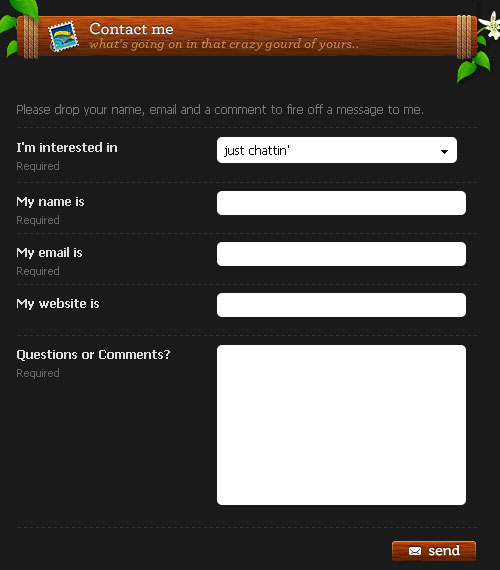
The form above (Komodomedia) is a perfect example because it gives the visitor various options for the form, rather than just requesting a quote. This designer has made themselves approachable, which is an excellent way to gain more clients. Also, above the form, there are other ways to contact the designer, which may be suitable for different visitors.
Make the Most Important Things Noticeable
Make sure the most important components of a portfolio design are out in the open and easy to use and find. For most, this means the contact form and information, the portfolio pieces, and the logo.
A perfect example is Alexandru Cohaniuc’s portfolio. The biggest text on the page is “Portfolio”, “Hi, I’m Alex”, and “Contact.” Right above the word “Portfolio” is the logo, strategically placed in the top left.
4. Build Legal Documents
To make things really official, a designer has to create some legal documents. These can be reused for each client, but must be made initially to deal with potential problems later.
Contract
A contract is a necessity for a freelancer of any sort. It will help protect the designer and the client, as well as outline some rules and guidelines. For more information on how to create a freelance contract, check out the resources below.
- How To Create a Freelancing Contract
- Step by Step Help on Creating a Freelance Contract
- Work for Hire Agreement (Flat Fee) Template
In addition, one can hire a technical writer or other writing professional to do the job.
Terms & Conditions
Terms and conditions are a more in-depth view of the rules between the web deigner and the client. Again, one can hire someone to write a terms and agreement paper for them, otherwise here is a great template: Terms and Conditions Template.
Copyright Agreement
A third needed agreement is a separate copyright agreement. Designers are always at risk for work being stolen and miscredited. A copyright agreement is a way to protect that work, and a way to set further rules for who can use the work.
Because copyright law can vary among different countries, we won’t get much into it here. It is important, though, to research copyright law, know one’s own rights, and apply it to one’s own circumstances.
5. Find a Starting Wage & Budget
Deciding on a personal starting wage is difficult, because we never truly know how much to pay ourselves. As anyone can guess, someone just starting out in freelancing won’t be making much. A new designer just has to make sure they have basic living expenses paid, and a bit of cusion room for emergency costs or budget mishaps.
Pros and Cons of Fixed-Priced Projects
A fixed-priced project is one where the designer and client agree on an overall cost for a design project ahead of time, and the payment is completely independent of how long it takes the designer to complete. Below are some pros and cons of using this method.
Pros:
- These types of project can be easier to apply to a monthly budget.
- Designer’s with efficient methods to save time during a project won’t be unfairly punished with a low cost.
- It is easy to see how many projects per month need to be completed to determine profits and budget handling.
Cons:
- It is much more difficult to determine a fixed-price for a project before actually completing it.
- Sometimes designers are underpaid using this method.
- Payment doesn’t come at regular intervals, which may not be suitable for all lifestyles.
Pros and Cons of Hourly Wage Work
While hourly work may be what we’re all used to, there can be some equal pros and cons to consider when thinking about this payment system as a freelancer.
Pros:
- Budgeting is easier for those that require a daily or weekly budget.
- It is harder to become under or over paid for a project.
- It is much easier to explain to the client the final cost of a project.
Cons:
- It is hard to determine our own hourly rate based on the judgement of our own skills.
- It is more difficult to work with a monthly budget.
- Timesheets need to be filled out and there needs to be an effective way to transfer timesheets back and forth between the designer and client.
A closer look into these two types of payment plans can help a beginner decide. For further reading, look over Effective Strategy To Estimate Time For Your Design Projects.
Tools for Managing Money as a Freelancer
LessAccounting.com Less Accounting is an all-in-one money managment application that will let one connect to bank accounts, and even let a freelancer invite a personal accountant login to help watch money. In addition, LessAccounting also features all the other basic money management needs for freelancers.
Mint.com Mint may not be made for freelancers specifically, but it is one of the best tools out there for taking control of one’s own money. This is perfect for new business owners that may be low on money, and need to pay extra attention to their cash flow.
Tickspot.com Tick is a time management tool aimed at organizing time so that freelancers can hit their budgets. It’s a great tool that breaks up time so a freelancer can enter hours worked, hourly pay rate, project pay rate, and more.
SlimTimer.com Slimtimer is similar to tick, in that it is a time and budget management tool. One can create tasks, time their own work, run reports, and manage their money overall more efficiently.
Invoicing Tools
SimplyBill.com SimplyBill is a very simple invoicing tool to help effectively keep track of clients, their invoices, and to send invoices out.
FreshBooks.com Freshbooks is a great invoicing tool for freelancers with a lot of versatility to meet anyone’s needs. Best of all, it’s free up to three clients, so this gives designers plenty of time to decide if FreshBooks is right for them.
Intuit By the creators of QuickBooks, Intuit is a free alternative invoicing system that is perfect for designers just starting out that need to save that extra bit of cash.

FreeAgentCentral.com FreeAgent allows a freelancer to manage all their invoices, and will even tell the freelancer what they owe the tax man.
6. Create a Résume
Without a strong portfolio just yet, new freelance web designers need to rely on a strong résume. This is a designer’s true chance to flaunt their skills in full detail. Most of us learned how to create a résume back in high school, and another good portion of us probably still hold on to our most recent one today. When venturing into a new freelance web design career, though, it’s time to tweak it to meet the needs of this new career path.
Below are some resources for creating the perfect résume for web designers and freelancers.
- How To Create A Great Web Design CV and Résumé?
- Web Designer Resume Tips
- 5 Steps to the Perfect Web Designer Resume
- Resume Templates
For a newly created web design freelance portfolio, providing a download link to a designer’s full résume may be just what the client is looking for.
7. Find “Portfolio Building” Clients
Now that just about everything is set up, it’s time to take action. Finding the first few clients is always tough, because nobody wants to hire a nobody. It may be near impossible to find good, well-paying clients yet, so sit tight and take on the first few “portfolio building” clients.
Consider Offering Free Services
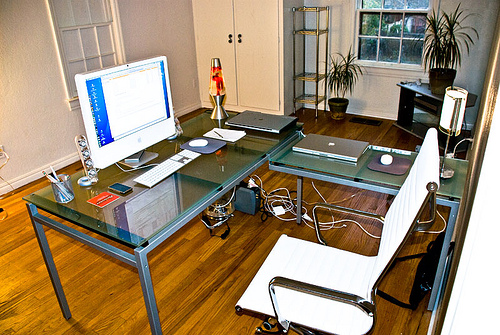
Image source: On the Block
When creating an ad to offer free services, be sure to avoid failure. This means setting limits — no designer wants to spend a month on a complicated job making no money. Offer only PSD templates, 1-page websites, or something of the like.
Of course, this isn’t an option for everybody because we all don’t have the time, nor the patience to do a free job. If that is the case, explore some options below to get paying clients that will gladly deal with a new designer.
Advertise Locally
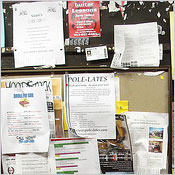
Put up fliers or an ad in the local newspaper to gain some local recognition. Not every potential client knows where to look online for web design services, and it may very well be that many are looking locally. Otherwise, they’re only finding top Google-ranked web design businesses that they can’t afford.
If a new designer comes to them offering cheaper services, whether in the form of a newspaper ad, a flier at a grocery store, or through word-of-mouth via friends and family, they’ll be very happy to hire.
Offer Freebies or Sell Templates
One more option requires no actual clients at all. Many designers choose to make free templates in their spare time, and use them to advertise their services, show off what they can do, and in some instances, sell them for some residual income.
Over at ThemeForest, Collis has sold a PSD template at $10 — 168 times. This means over a thousand dollars in his pocket, and a great portfolio piece to show off.
Unless one makes spewing out free or cheap templates, Wordpress Themes, or scripts their full-time business, this isn’t going to be a great option for making monthly living expenses. It is however, a great alternative to 1) get a designer to create some portfolio pieces, 2) get the designer’s name out in the community, and 3) let the designer make a bit of extra cash.
However, it is important to try a few real clients as well, for the business experience.
Then what?
After finding a few clients, keep these few things in mind.
- Create a personal (yet professional) connection between the first few clients. This may welcome great testimonials and word-of-mouth clients.
- Offer variety in your services when starting out. For example, one may want to try logo design, web design, and basic coding. Later on, when trying to add a new service to the freelancing business, this will make for a much easier transition.
- Just because new designers have to deal with low (or no) wages, doesn’t mean they should offer low-quality work. Put in the hours and create something great. Keep in mind that there is more to the first few projects than just the money.
Tools for Client Management
BaseCamp BaseCamp is a very popular project managment tool for freelancers. With BaseCamp, a freelancer can share files, set deadlines, assign tasks, organize feedback, and more.
Zoho Writer Essentially, Zoho Writer is an online word processer. In addition to being that though, it is aimed at freelancers, with the ability to share documents and collaborate with clients in various ways.
Big Contacts Big contacts is an online contacts solution to help share files, email, have meetings, send notes, and more between the freelancer and client.
8. Create (and Stick to) a Schedule
A huge part of freelancing is finding a schedule that fits the designer’s needs, and allows the designer to get the necssary work done on time. It is a step in itself to becoming a professional freelance web designer.
Find the Hours Necessary
To find a schedule, a designer needs to find how much time it actually takes them to do the tasks at hand. A freelancer has to ask themselves, “How much time does it take to create a simple PSD template, and then how long does it take to code it?” Depending on the skill sets of individual designers, this length of time can greatly change. However, work from previous clients or the creation of sample templates can give a rough estimate.
After determing how long the workflow takes, decide on a daily hourly input for work — and work only.
A Daily Schedule
A general daily schedule depends greatly on each designer’s personal lifestyle, and is something that needs to be predetermined in order to be successful. After a designer realizes how much time it takes daily to get the required amount of work done, he or she should create a daily schedule for themsleves.
A daily schedule will help aid the designer to stay on track, instead of constantly checking email, jumping back and forth between projects, or ignoring client work altogether.
A Weekly & Monthly Schedule
On top of a daily schedule, freelance professionals should also make a weekly and monthly calendar. A broader calendar can be used to keep track of deadlines and plan out longer projects.
Whether it be a calendar hanging on the wall or a web-based calendar like below, make sure to keep track of deadlines, payment schedules, and other checkmarks along the way of a project.
Find the Motivation
Anyone can see the benefits of a steady schedule, but the hardest part for most may be staying motivated to keep to it. Below are some things to keep in mind if the urge to break a preset schedule creeps up.
- Do the same specific thing during work at the same time every day. For example, check email first thing in the morning, then start directly on client work.
- For those who have already quit their day jobs to pursue this career: Wake up at the same time everyday. If it means sleeping in a few extra hours than the traditional worker, that’s fine. However, having a constantly altering start to the day can mess up a schedule, even if things are done in the same order during wake time.
- Write a to-do list in the morning of items that need to be addressed that day.
- Use a calendar and daily planner to keep track of daily, weekly, and monthly tasks.
A Few Time Management Tools
Dejal Timeout Quite the opposite of most time managment software, this application actually tells you when to stop working. With timed breaks, this tool can help a freelancer have an overall more relaxing career.
Google Calendar Google Calendar is a great option for those that use Google’s other tools a lot, in that it will be all in the same place. Like many of Google’s other tools, it is free, versatile, and very useful.
Ta-da List Ta-da List is an easy to-do list tool hosted online for convenience. It is easy to create lists for one’s own use, or for others.
9. Create a Business Plan
One of the most boring and tedious tasks one can do is create a business plan. Most might feel free to skip this step, but wait a moment and consider the benefits (and assurances) of taking the time to create one.
Benefits of a Professional Business Plan:
- Creates a real business in the designer’s eyes, and in the client’s eye.
- A business plan can be used in tricky legal situations, to differ the business from just a hobby.
- Identifies future plans, direction, and goals for the business.
- Keeps the designer, as a business owner, on track with the development of the business.
- Upgrades the simple monthly budget to a long-term financial structure.
Anyone can see the benefits range from business growth, to financial growth, and credibility. To learn more about creating a business plan, view the helpful article on About.com, Back to Business Planning: Developing a 4-Part Business Plan for Freelance Designers.
10. Know How to Gain Recognition
Not all designers are marketing experts, but a bit of knowledge about how to gain recognition in the freelance web design world is necessary to be successful. Designers should do research on marketing, and create a long-term plan for the growth of their portfolio and their reputation as a freelance designer.
Expand with Social Networking Sites
Use social networking sites to not only promote a portfolio, but also to promote new designs and projects. In addition, one can use Twitter, or something similar to get valuable feedback on current projects. For more ideas on how to get the most out of Twitter as a web designer, take a look at Ramsay’s post: 5 Simple Ways Twitter Can Make You a Better Web Designer.
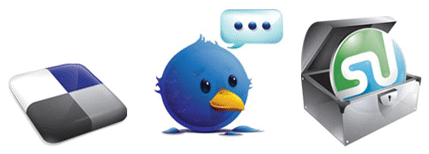
Also, those who are active within social media communities benefit far more than those who use them for only self-promotion. Create a community, find other designers, and even discover some interesting finds along the way. Take the time to enjoy social media websites, while gaining recognition as a web designer.
Get Recognized in a Crowd of Applicants
Knowing where to look for more work is necessary when depending on that work for a decent income. However, with thousands of freelancers floating around in forums, job boards, and other sources of possible clients, getting noticed can be some hard work — especially when others (who may be doing it for just a hobby) are willing to offer their services extremely cheap.
To get noticed by clients and win a job, follow a few of these simple rules.
- Don’t apply to jobs that are more than a few days old — chances are they’ve been filled, and it’s really a waste of time.
- Use multiple job board websites and forums to have a wider range of possibilites.
- Be a good designer. This sounds like a dumb tip, but often times clients get application for web designers that either 1) aren’t good at design or 2) have designs that show no unique abililty and are very ordinary.
- Don’t apply for jobs that you don’t qualify. Client’s can’t stand hearing, “I haven’t done a design for the style you’re looking for, but I’ve been creating websites for X years and could probably do it.” The next designer that comes to them with a decent portfolio proving they can meet the client’s needs is going to get the job instead.
- This shouldn’t even have to be said, but sadly, it does: Capitalize your sentences, use correct grammar, and don’t make spelling mistakes when applying for a freelance job.
As for the best tip of all — don’t sell work cheaper than it needs to be just to gain a client. If a client can’t see why a logo design costs $200 when the kid that applied the day before is offering the same service for $20, then it’s really their own loss. Somtimes it’s worth losing jobs, and that’s a part of the difficulty when just starting out.
11. Blog often, but pay attention to the quality of your posts
Blogs are great for improving search engine rank and gaining popularity in the web design community. Whether designers have a lot of time or barely enough, a blog showcasing interesting finds or discussing anything related to the web design or the freelancing profession can gain an audience fast.
Below are just a few websites that use blogs to promote their general careers as freelance web designers.
WellMedicated.com really doesn’t update that often — only about once every two months — but it’s still a well respected design blog in the community. Andrew Lindstrom is a freelance web designer, and spends most of his focus on that. However, with a great following on his blog, he can easily gain traffic to his web design portfolio through his sidebar and about page.
In a recent interview of Steven Snell of Vandelay Design, Steven discussed how the popular Vandelay Design Blog was indeed intended to bring more traffic and clients to the Vandelay Design portfolio. Well, that mission was very successful, and the blog changed direction to fulfill the wants of a different audience, as a full-time design blog.
Now, it is updated every few days and it’s goal is no longer to bring portfolio traffic. However, with a link to the portfolio and further information about the web design business, there is no doubt it still does.
Chris Spooner’s blogging experience started with just some simple experimentation, and as a place for him to simply explore and share. However, the blog soon gained a lot of popularity, and now does great work in promoting his portfolio as well.
So the lesson to be learned is, no matter what reason a designer has to start a blog, it can be a great source for traffic and a way to gain recognition in the community. Not to mention, the additional income from selling advertising spaces.
12. Get into the Community of Freelance Web Designers
Don’t be a freelancing loner. Getting involved in the community and meet other web designers and freelancing professionals to grow as a designer.
Make contacts within the community by blogging, joining a design network like Envato, and using forums. One could also donate freebies to larger communities, or try to do guest posts.
Below are just a few ways gaining a strong social network in the community can help a freelance web designer.
- It creates a support group. Guessing that many freelance web designers don’t have many offline friends or family that do the same thing for a living, having an online support group for your field of interest can be very beneficial. Get into the web design community to share, rant, rave, and get feedback as a designer.
- Learn new things. Following a blog regularly, being active in social networking sites, and participating in forums is a great way to improve your current abilities, and expand horizons. Instead of grinding away at what needs to get done or what needs to be learned for a current project, being a part of a community will help you to explore new things and find inspiration.
- Become an authority and let the clients come. Being the best designer in the world doesn’t make that designer an authority figure. As skills and wisdom improve, others in the web design community will reference a designer’s work, portfoio, and services for them.
Attend Conferences and Other Face-to-Face Events
Attending various web design and other conferences for webmasters is not only a great way to network with other designers, but also a great way to learn new things and keep up with the latest trends. Get to some conferences, and become a real person, rather than just an online presence.
Below are just a few popular conferences within the community.
AnEventApart.comAn Event Apart is an intensely educational two-day conference for passionate practitioners of standards-based web design. If you care about code as well as content, usability as well as design, An Event Apart is the conference you’ve been waiting for.
Carsonified
For Web Designers, Creatives and anyone who cares about web design.

Web Design WorldSince 1997, we’ve helped thousands of Web designers learn what they need to know to make better web sites, manage web projects, and get home at a decent hour.
As a freelancer, we have the ultimate schedule for attending these events, and it can be easier than for others to gather the funds. In order to truly succeed, freelance web designers should attend these events to socialize, learn, and grow their freelancing web design career.
13. Reinvest the Income
It takes money to make money, so when starting out, reinvest some of the income made back into the freelancing business. It’s tempting to pay off bills or buy something nice once it can be afforded, but dedicate a certain percentage to the business’s growth.
Among the many things that need to be maintained for a freelancing business are software upgrades, hosting and domain renewals, desk space upgrades, stationery, and more. In addition to maintinence items, though, some of the income may be turned into a luxury web design item — for fun and for work.
Figure how much of the income is actually needed for living expenses, and use either all of the remaining profit, or a strong percentage of the profit to go back into the business.
14. Get a Professional Space
Finding a place to do work may help new freelancers differ play time from work time. On another note, a good workspace is needed to keep organized and create an effective workflow. Below are two great workspaces that are effective and fun, both held as a home office.
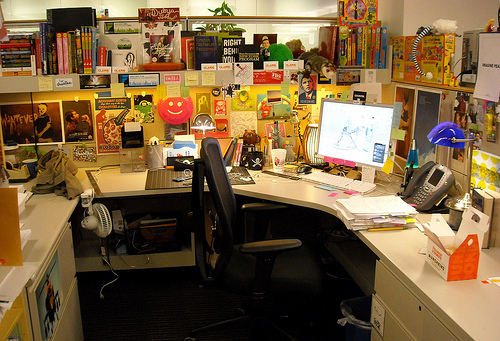
The workspace of Ben Mautner provides a lot of worspace to get things done, with plenty of inspiration handing on the walls as well.

Jay Hilgert’s office space is is clean, neat, and trendy — but also has all the necessary equipment.
Beyond a home office’s benefit of staying organized and aiding in getting some work done, it can make anyone finally feel like a true professional freelance web designer. You may want to take a look at the workstations of other designers as well.
15. Keep Learning New Tricks
As the final stage of the transformation comes into completion, there is only one more thing that needs to be done to create and maintain the status of a professional, freelance web design career. That final step is to keep learning. Designers should always be discovering new practices, techniques, standards for client work — and also tweaking their own business along the way.
Conclusion
Hopefully, this walkthrough can help most web designers just starting out in freelancing go down the correct path. Freelancing in the web design niche is an exciting and freedom-filled career path, although it requires a mix between design, development, and entrepreneurship. Finding a good grasp of all three can only mean success as a freelance web designer.
Because everyone’s experiences are different, for anyone who has already accomplished a freelancing career, feel free to share further tips and advice for doing so. It’s always great to hear and discuss more tips.
Further Resources
You may also be interested in these extra references:
- 50 Ways To Get Noticed A very interesting and comprehensive post by Carl Heaton that aims to show you how to attract users and make them hungry for more.
- 101 Essential Freelancing Resources An ultimate list of freelancing resources.
- 53 Steps to follow if you want to become Freelance Web Designer/Developer (60+ Resources) A quick overview and lessons learned from a new freelancer with 53 quick tips in freelancing.
- 60+ Essential Feeds for Freelance Web Designers A quick list of over 60 blogs and resource websites for freelance web designers.







